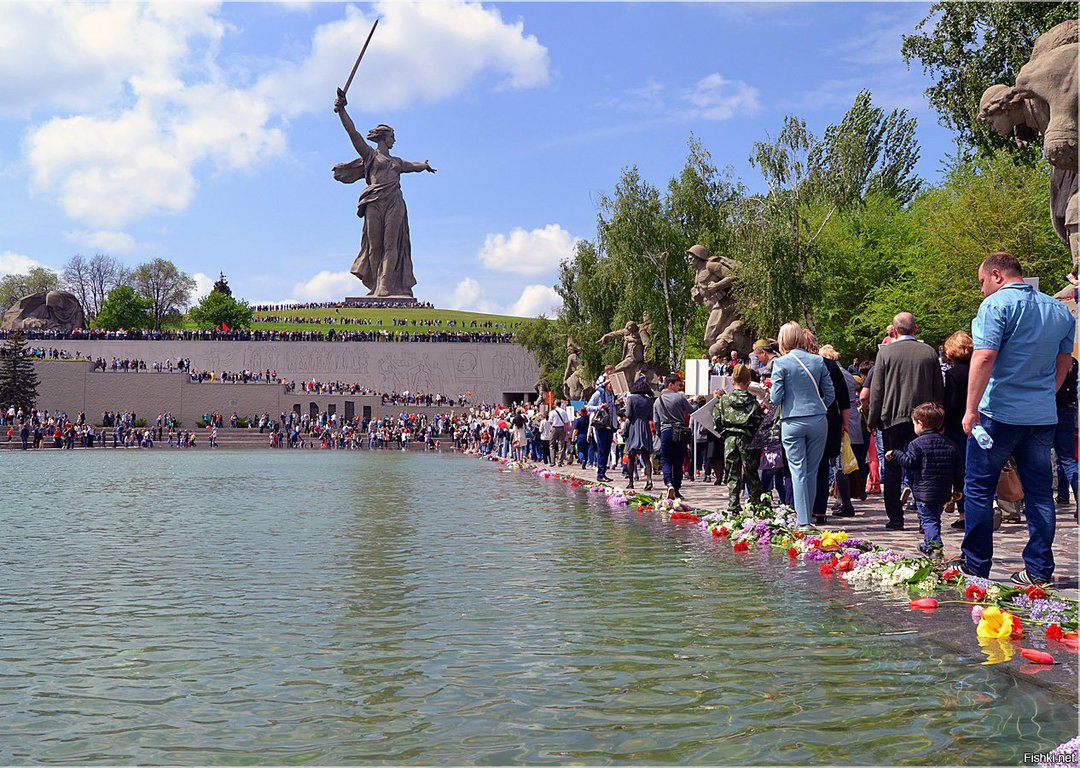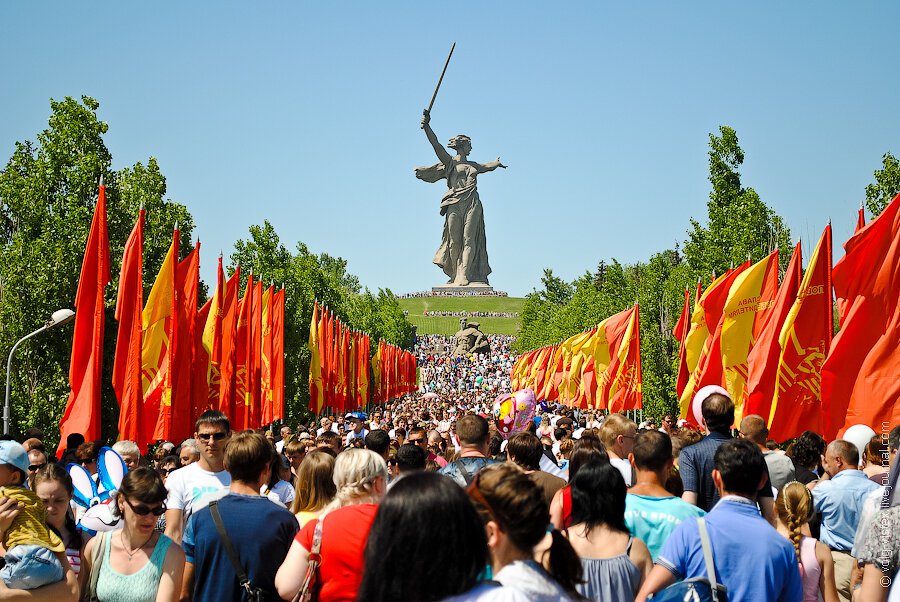 Victory Day
Victory Day➤Guided city tour visiting all the highlights: the Mamayev Hill memorial complex (the main height #102.0), Motherland calls monument, Square of Fallen Fighters, etc.
➤Guided tour to the Pavlov's House famous for being defended for 58 days and being specially marked at Friedrich Paulus' personal map. You will see the Hall of Glory, Not a Step Backwards Memorial, ruins of the buildings and other traces of the battle.
➤Guided tour to the headquarter of the 6th German Army, paying special attention to the sport where Friedrich Paulus surrendered in the basement of the central department store.
➤Guided tour to the open-air Weapon of Victory exhibition and "The Battle of Stalingrad" museum.
➤In the evening, take a sunset cruise at Volga river.
 Immortal Regiment
Immortal RegimentThe Battle of Stalingrad (23 August 1942 – 2 February 1943) was the largest confrontation of World War II, in which Germany and its allies fought the Soviet Union for control of the city of Stalingrad (now Volgograd) in Southern Russia. Marked by fierce close-quarters combat and direct assaults on civilians in air raids, it was the largest (nearly 2.2 million personnel) and bloodiest (1.8–2 million killed, wounded or captured) battle in the history of warfare. After their defeat at Stalingrad, the German High Command had to withdraw vast military forces from the Western Front to replace their losses.
 Volga River sunset
Volga River sunsetAfter Victory Day (9 May), the Memorial Day is one of the most importation Russian national holidays. Big events unfold to commemorate the WWII. In the evening, enjoy a river cruise and watch the fireworks. A festive salute will thunder over the Volga River. Unlike Victory Day, when the main avenues of the Russian cities host yearly Immortal Regiment walk, se songs of the war years hit the central squares and the Mother Homeland welcomes a light show, this day is a day to remember, not to celebrate.